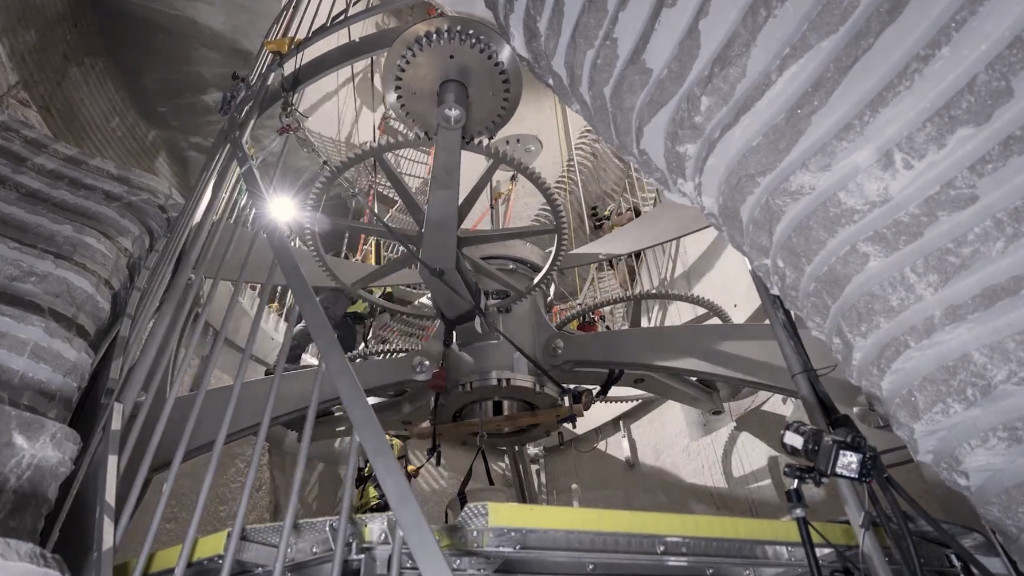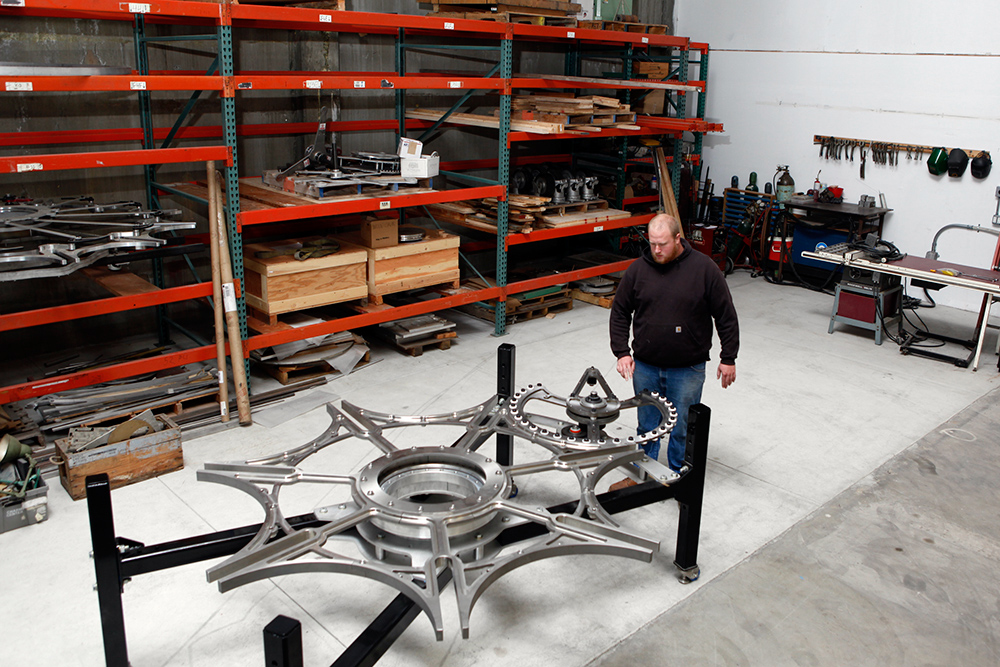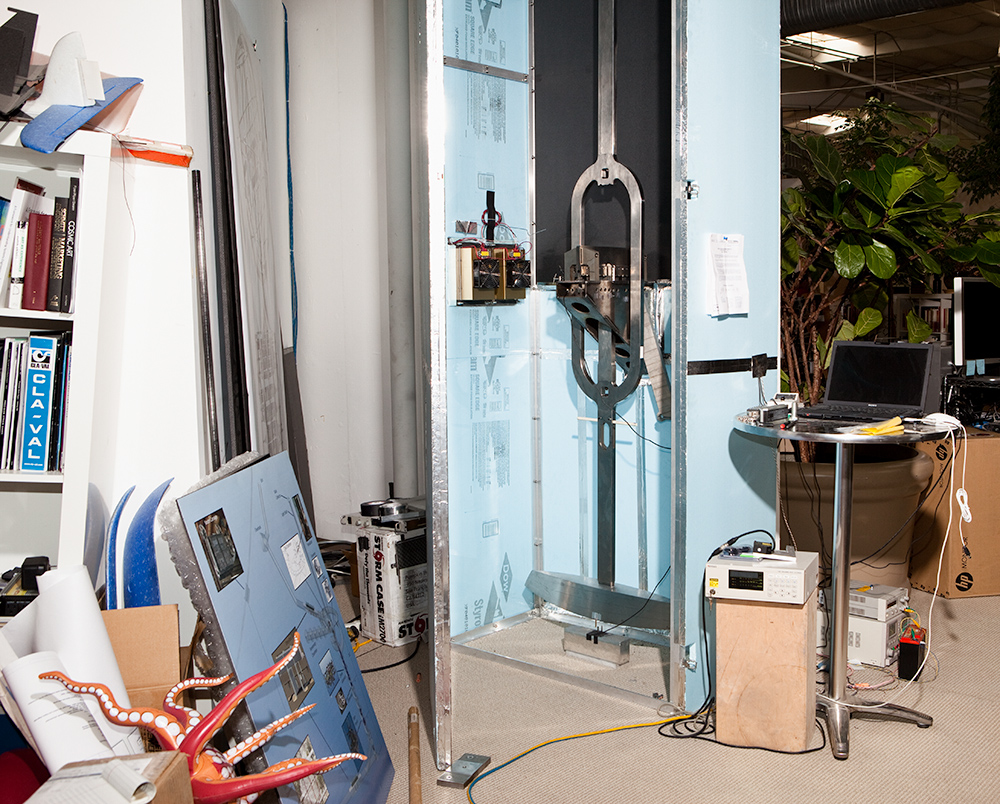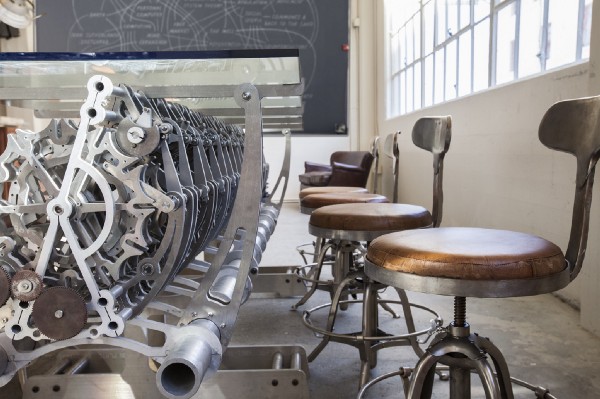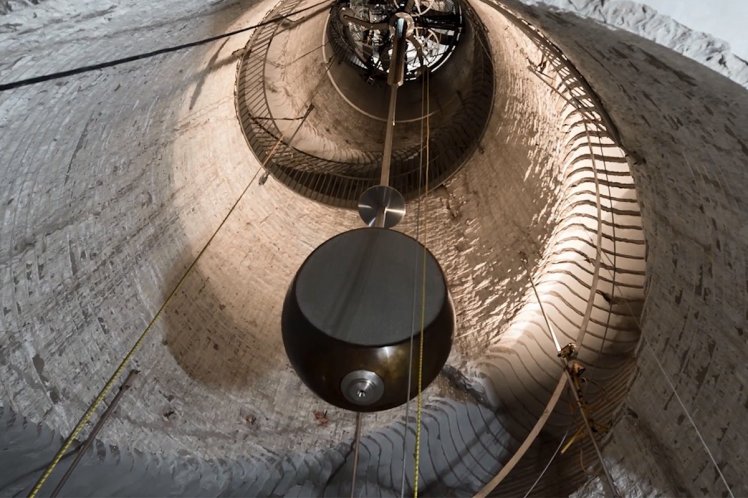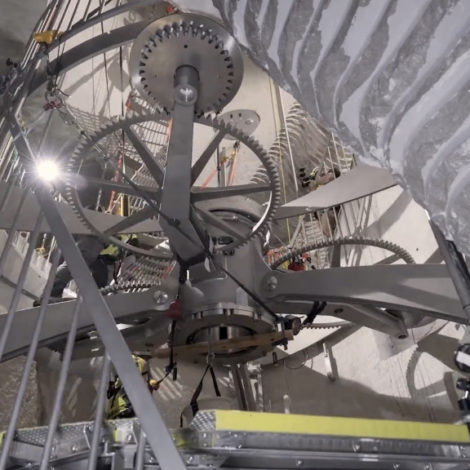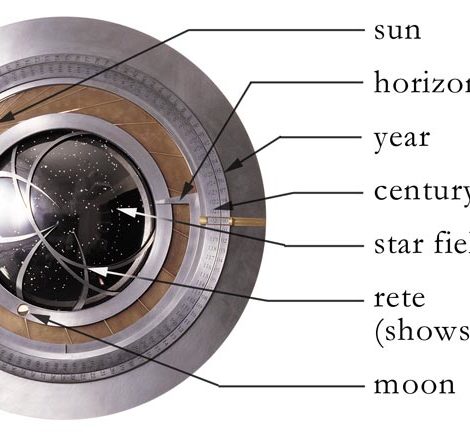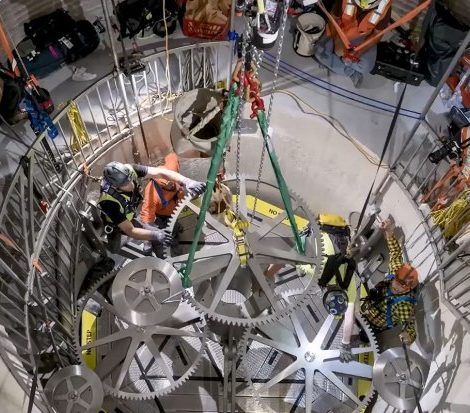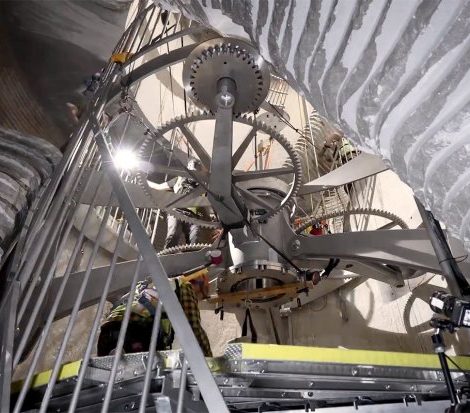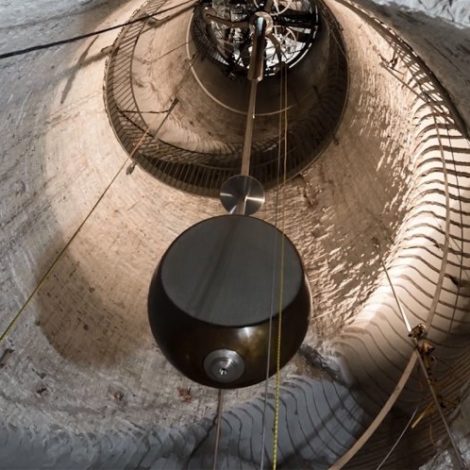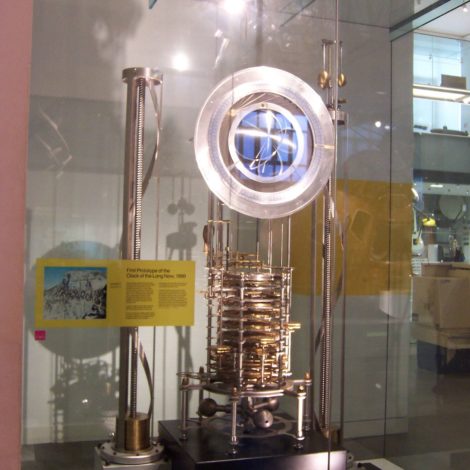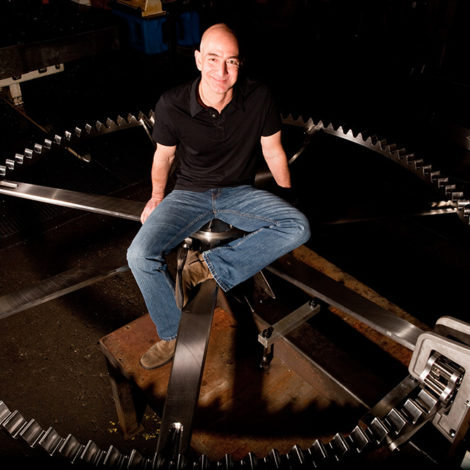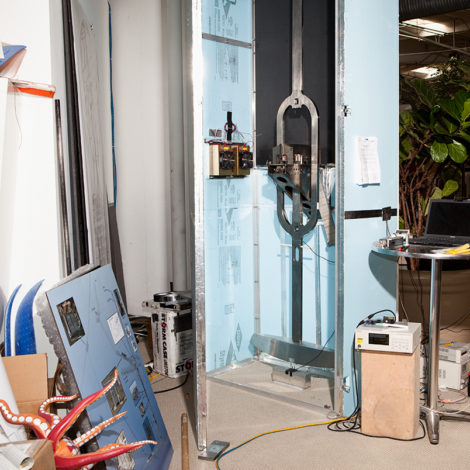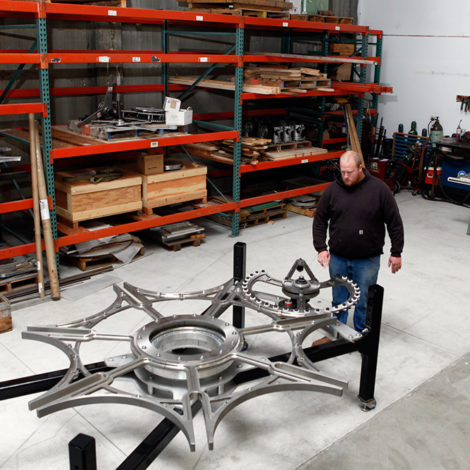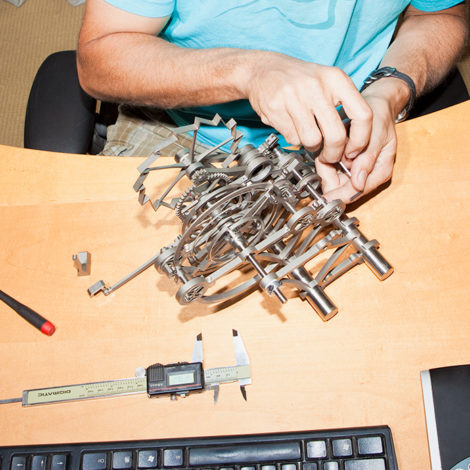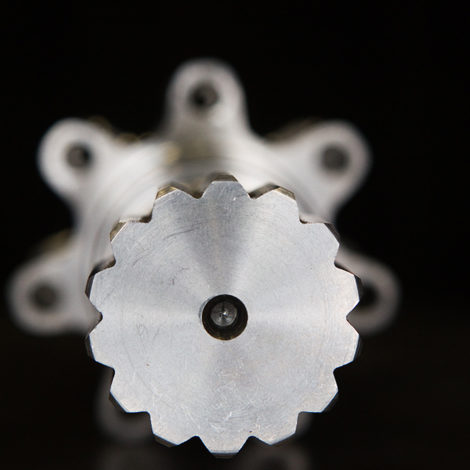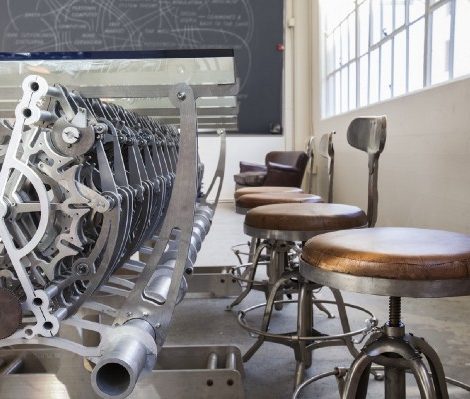Most of the 10,000 Year Clock will be produced in steel and titanium – being mostly (or entirely) produced in America. Anyone who feels that America has lost their “watchmaking spirit” need only learn the story of the 10,000 Year Clock. Again, the clock is entirely mechanical since there is little support to the idea that electronics can live that long. One of the interesting technical elements of the clock is that the designers wanted to prevent it from having too many areas where metal touches metal. Mechanical wristwatches currently employ non-metallic materials such as synthetic ruby and sapphire, or silicon and ceramic in wristwatch movements designed to make them last longer and perform better. Some of these same materials are found in the 10,000 Year Clock.
The team for example chose ceramic ball bearings for many of the turning parts of the machine because ceramic parts (mostly zirconium dioxide) do not require lubrication and can last a long time. Also, since the parts of the clock move so slowly, there is a very real concern that metal parts can fuse together over time. Buy the right mechanical wristwatch model and you’ll also be able to have ceramic ball bearings in your personal time telling machine.
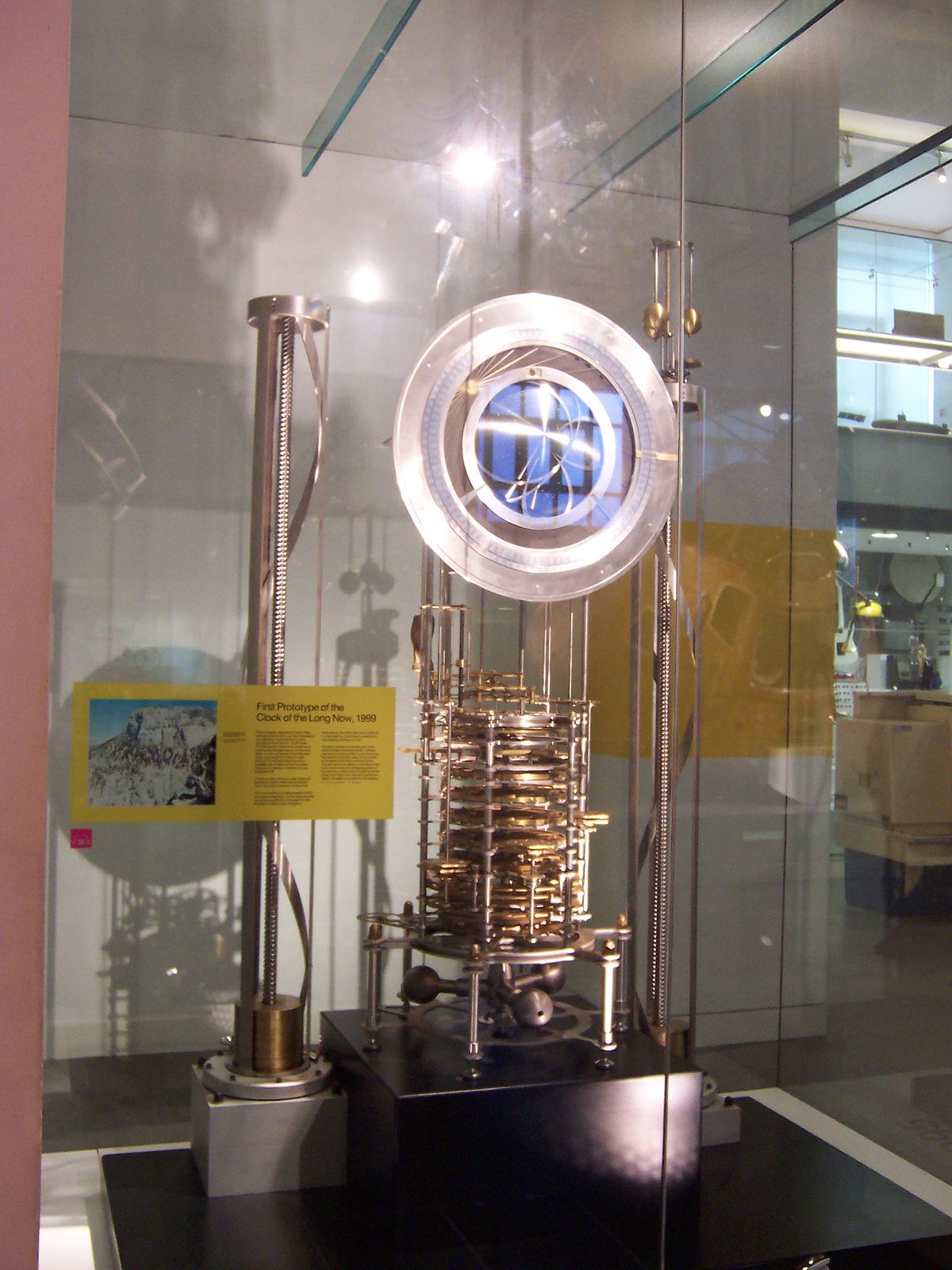
What functions does the 10,000 Year Clock offer? Such a complicated system does more than simply tell you the current time – even though the time won’t be indicated down to a per minute or second accuracy. The regulation system of the 10,000 Year Clock (developed entirely for this project) is in titanium and beats once each 10 seconds. The system is designed to have only one of its hands move each day – and that is the hand that indicates the date. Other indicators will include the position of the Earth and Moon, the year, and a host of other “planetaria and mechanical calendars.”
Noteworthy is the complicated chiming system that is designed to make it so that each time it chimes the melody is a little bit different. The system is purportedly able to offer 3.5 million different chiming combinations and the 10,000 Year Clock is designed to chime once a day (power willing). The chimes use watch-world technology known as Geneva Wheels, of which there are 20 in the assembly. The chiming system in total will be up to 80 feet long and easily weigh several tons. The project administration has made it clear that the design of the gongs hasn’t even been finalized yet, even though the system to create the melody is. A beautiful and poetic detail of the clock is that it will chime deep in the mountain for eons, without anyone to hear it.
Let me clarify that last remark because without human intervention there are several things that the 10,000 Year Clock will not always do. I’ll get to how the time-keeping system is powered below, but for now appreciate that the dial to indicate the time as well as other complications needs to be manually wound up in order to display. Thus, a core system will always know the accurate information (at least it is designed to) but to display it will require power generated from various winding devices available to visitors who visit the clock’s mountain home.
The chiming system required far more power than the basic time system requires to operate. Thus, the chiming system will only work without human intervention if there happens to be extra power in the large titanium weights that will power the clock. In many ways the 10,000 Year Clock will look like a giant grandfather clock, with weights pulled by gravity and a massive titanium pendulum that is part of the regulation system. How are these large weights lifted to begin with?
The answer is a system that will be similar to that in the Jaeger-LeCoultre Atmos table clock. For almost 100 years anyone could buy an Atmos clock that runs on temperature differences. The system is based on the principle that certain gasses expand and contract with differences in temperature. Put these gases in a container that can expand and contract, and you can use that motion to power a clock. Such a system is exactly what the 10,000 Year Clock uses, and relative to its massive bulk and complexity, it sips power. As I said, the clock beats once each 10 seconds. Compare that to your average mechanical timepiece’s escapement system which beats eight times per minute. An electronic quartz movement has an equivalent “beat” of over 32,000 times per second.

Faster beats (frequency) are related to a watch movement’s ability to be accurate. Compared to most clocks, the 10,000 Year Clock operates at an enormously sluggish and imprecise rate. How then can such a long-operating clock ever claim to be accurate. Sure the 10,000 Year Clock might operate for thousands of years, but what allows it to be accurate for that long? In addition to a huge amount of super-computer simulation running, the 10,000 Year Clock is able to readjust itself on a daily basis. This is the key to long term accuracy – not really needing to be that accurate if you can correct your time on a daily basis.
Up near the top of the clock where it protrudes from the mountain will be the mother of all sapphire crystals (also of course used over the dials of good wristwatches). How it will be kept relatively clean is still a mystery to me. The transparent crystal will allow light to enter the clock as well as be where the clock winding system begins. If the latter requires changes in temperature to operate, then being near the surface will have it experience much more dramatic changes in temperature (day to night) than inside the mountain itself where temperatures are much more stable.

Next to the “clock winder” will be a special system known as the Solar Synchronizer – and this is how the clock will correct itself on a daily basis. In short, the system waits for the sun to be in the right “noon” position in the sky each day. Once this particular position is achieved a part of the system heats up and sends down a signal alerting the time computing part of the clock that it is 12 noon. Thus, by using the position of the sun, an equation of time calculator, and a synchronization system, the 10,000 Year Clock can remain accurate for 10,000 Years.
If you’ve played the right puzzle-solving video games or simply seen movies like Indiana Jones, the 10,000 Year Clock is starting to visually make sense to you. From the clock’s secret location, housing which is meant to impress future guests, and almost purely sentimental reason for existing, you have all the makings of a beautiful mystery for future generations to decode. Such a device will tell future human empires enormous information about today’s people, and is something that any civilization would be extremely proud to have produced. For what it is worth, the 10,000 Year Clock project has really inspired me to keep thinking long-term and I hope to visit the 10,000 Year Clock when it is done. Until then you can view updates at longnow.org.

